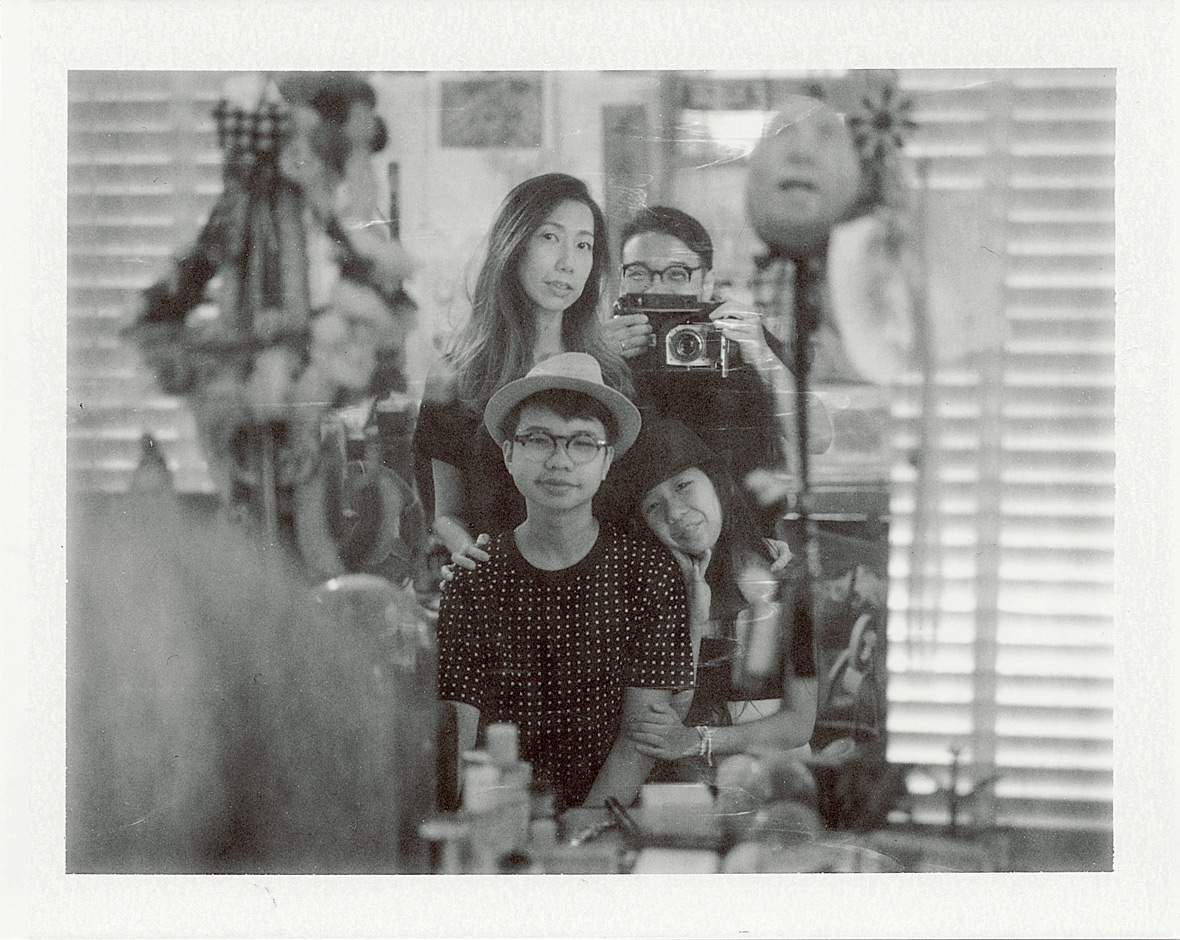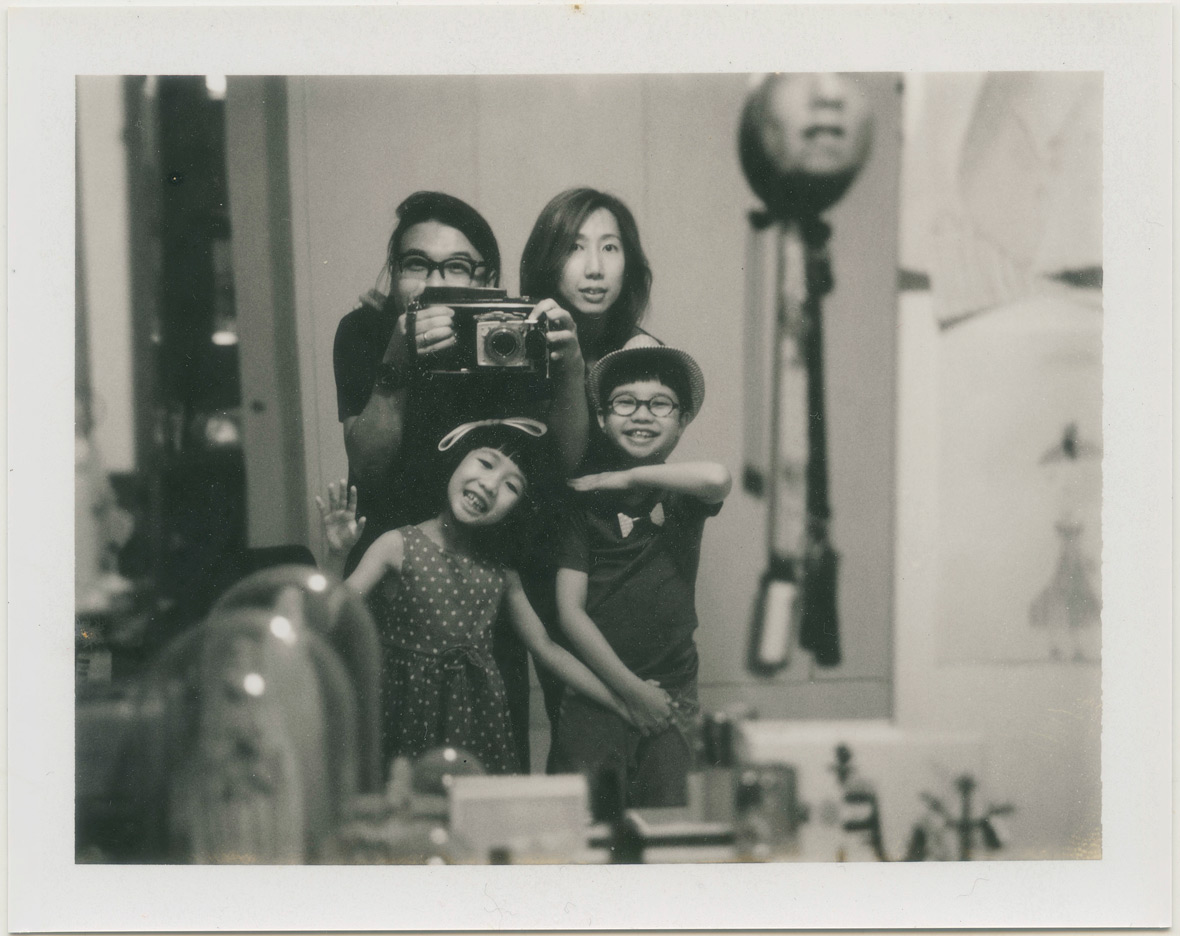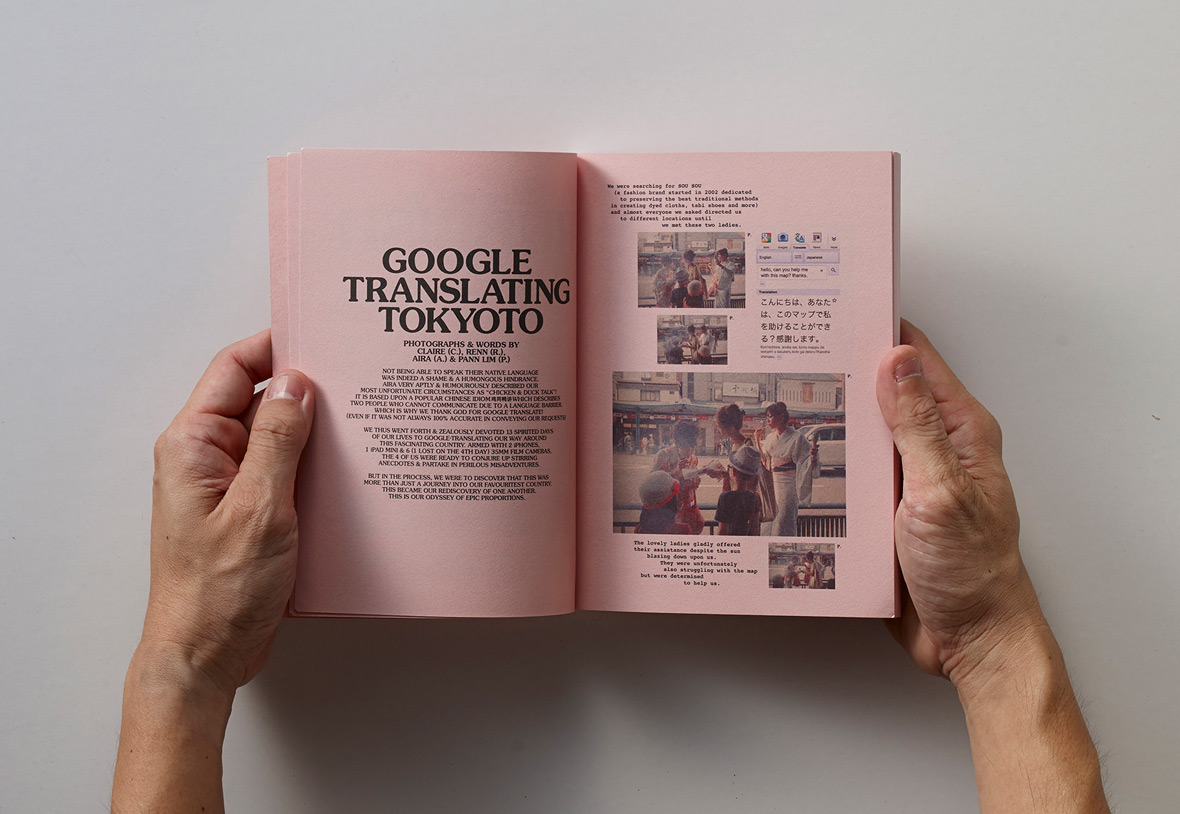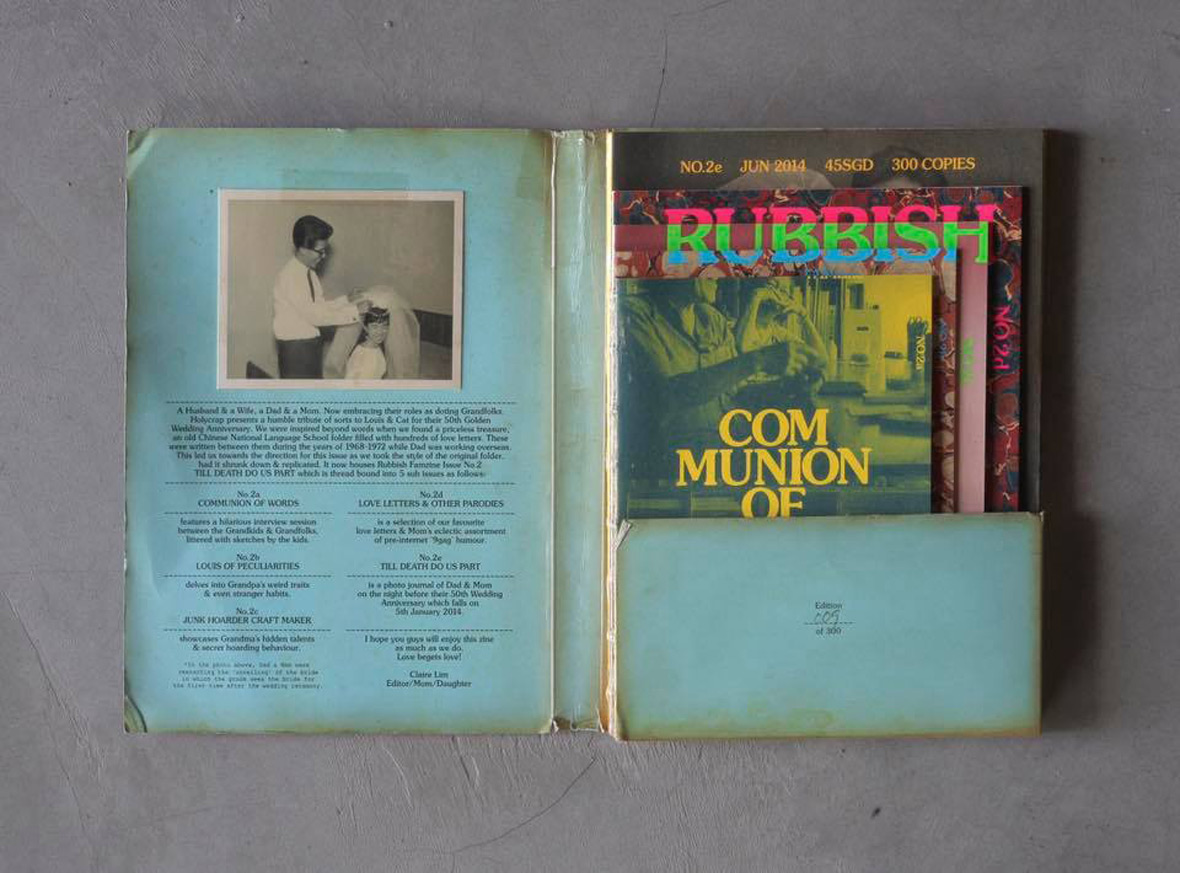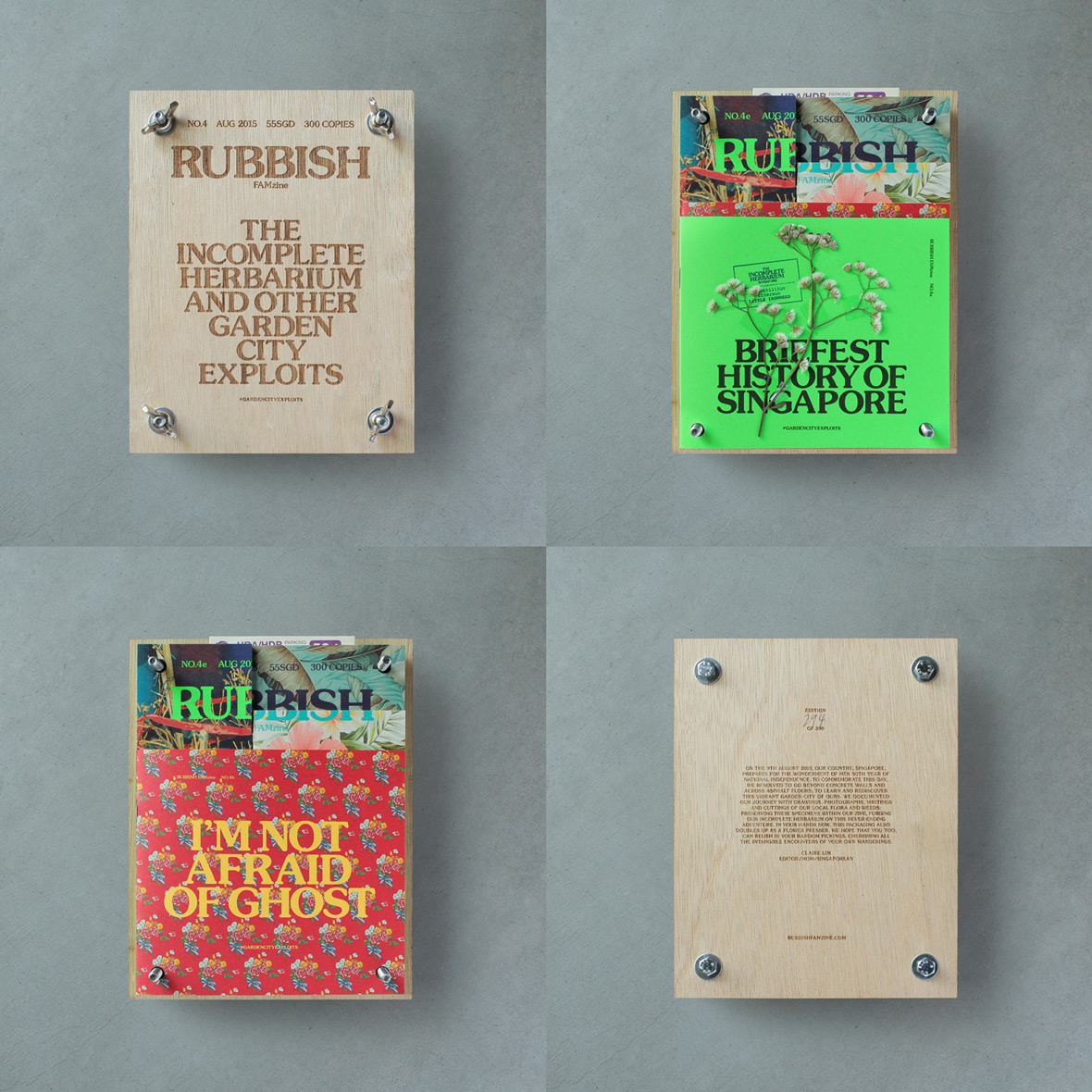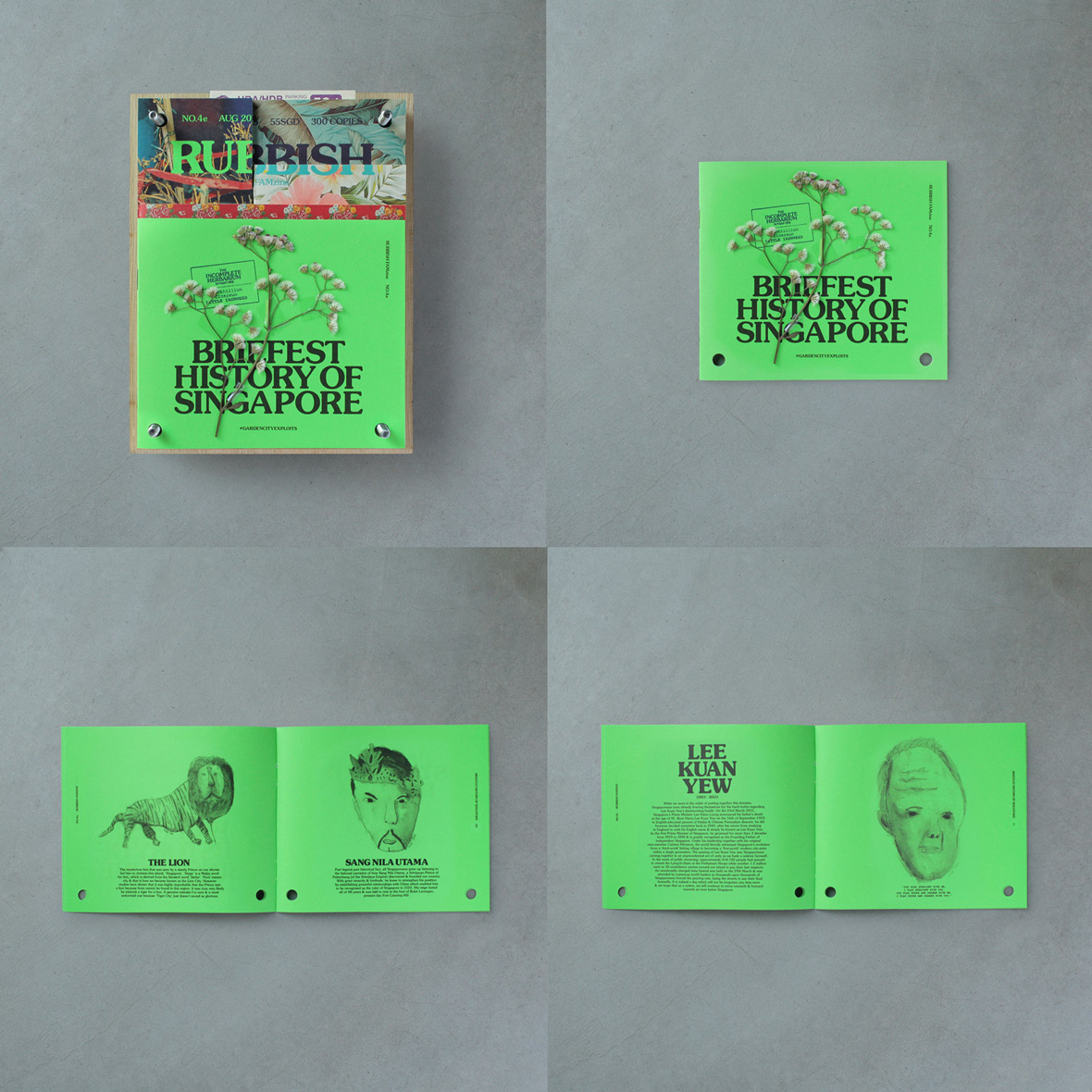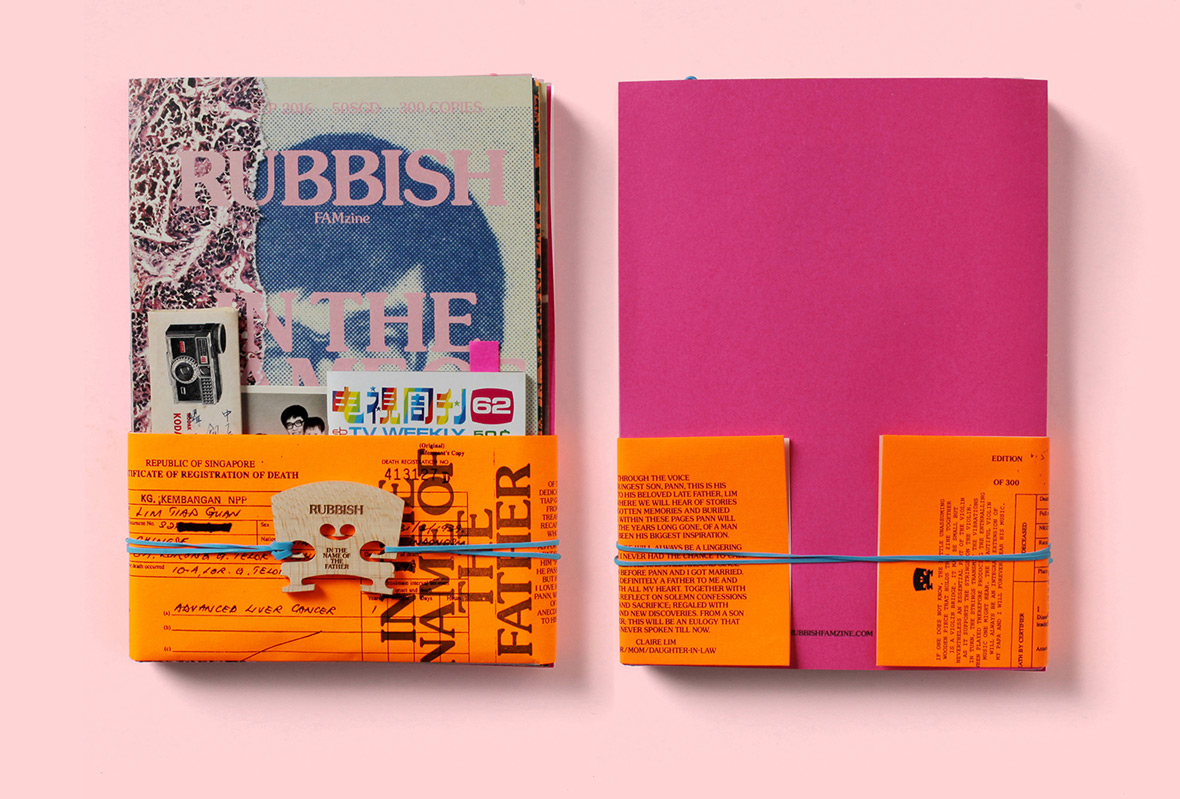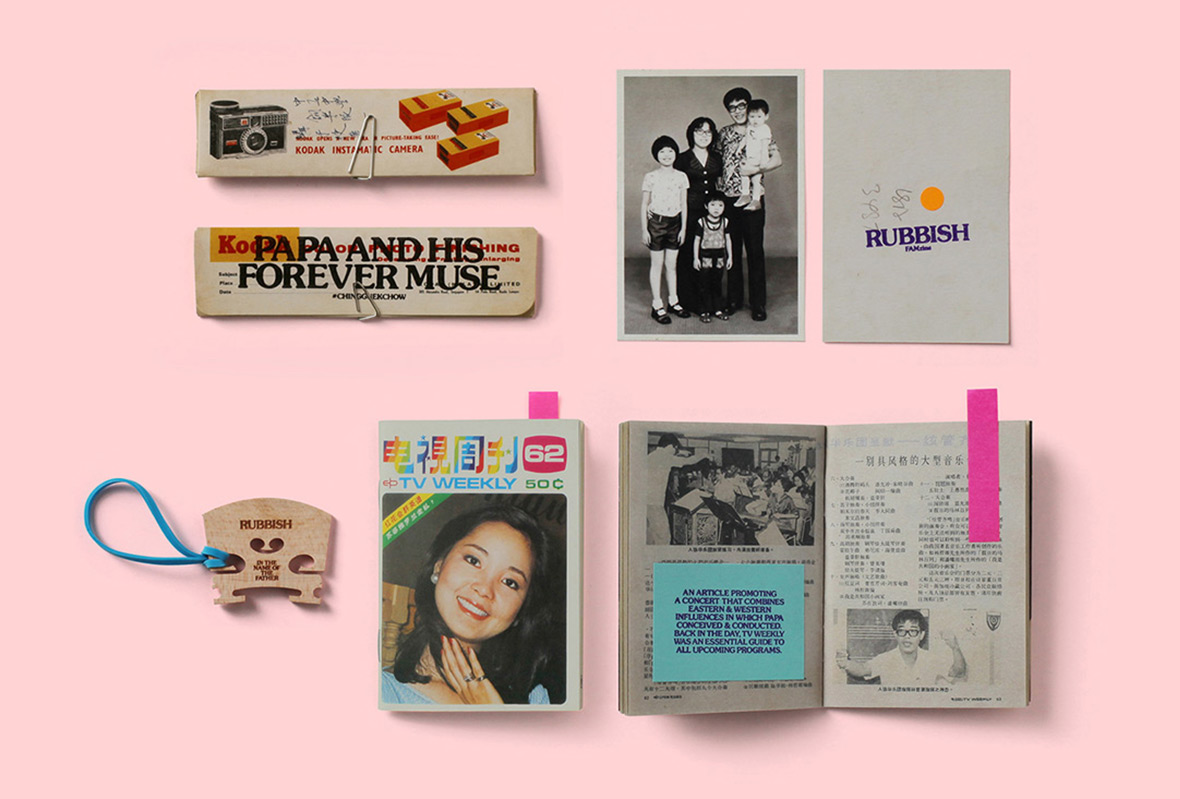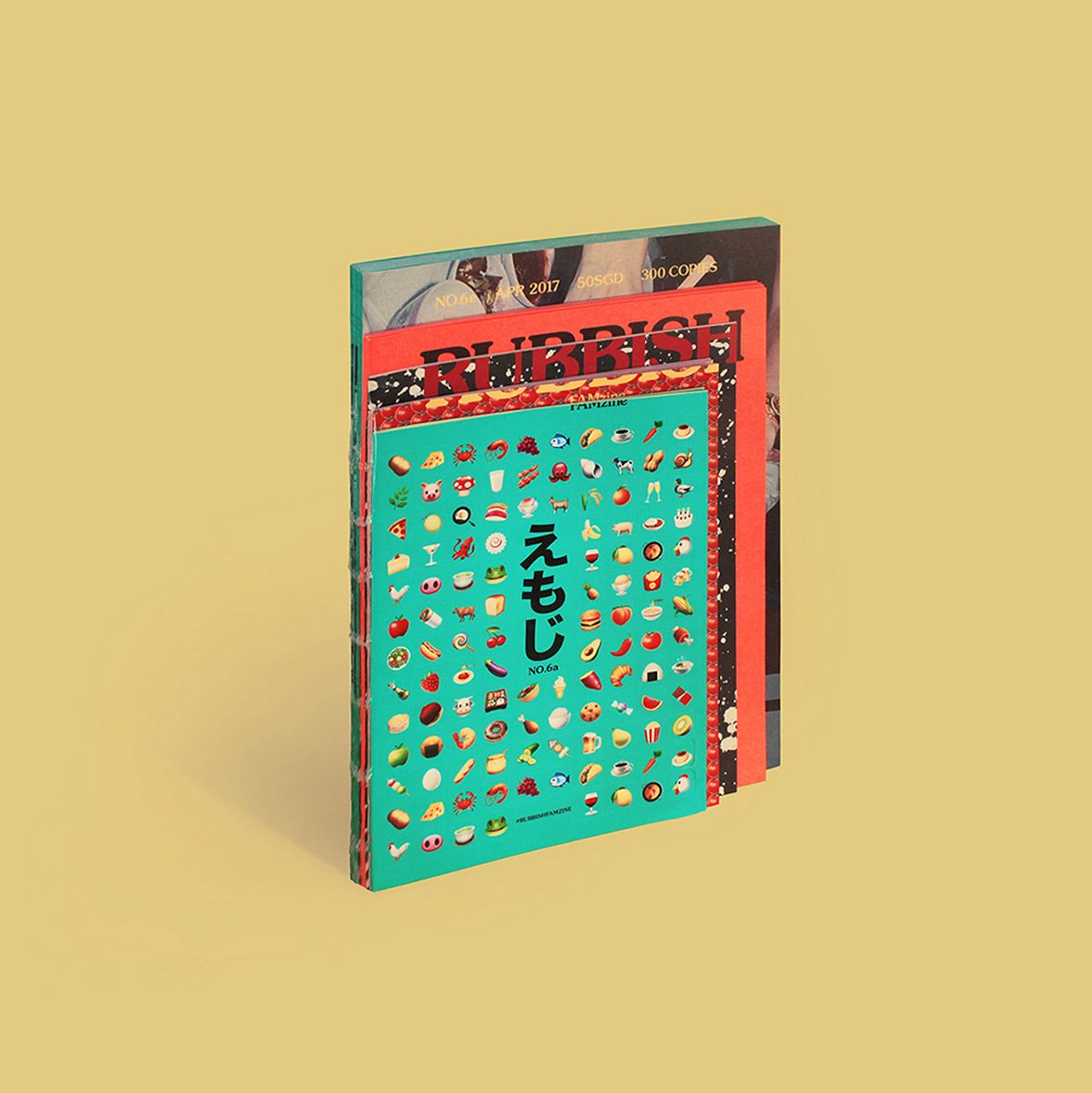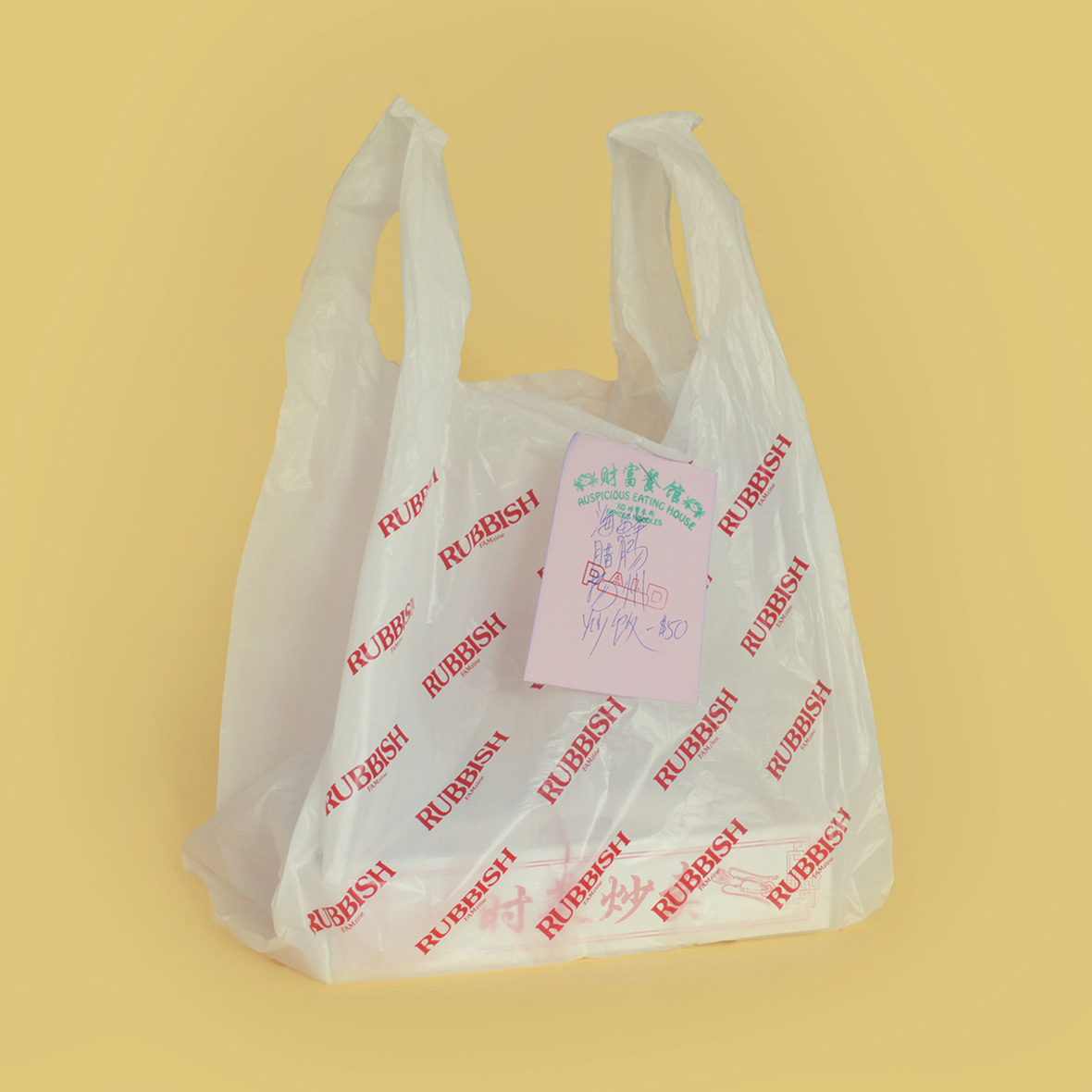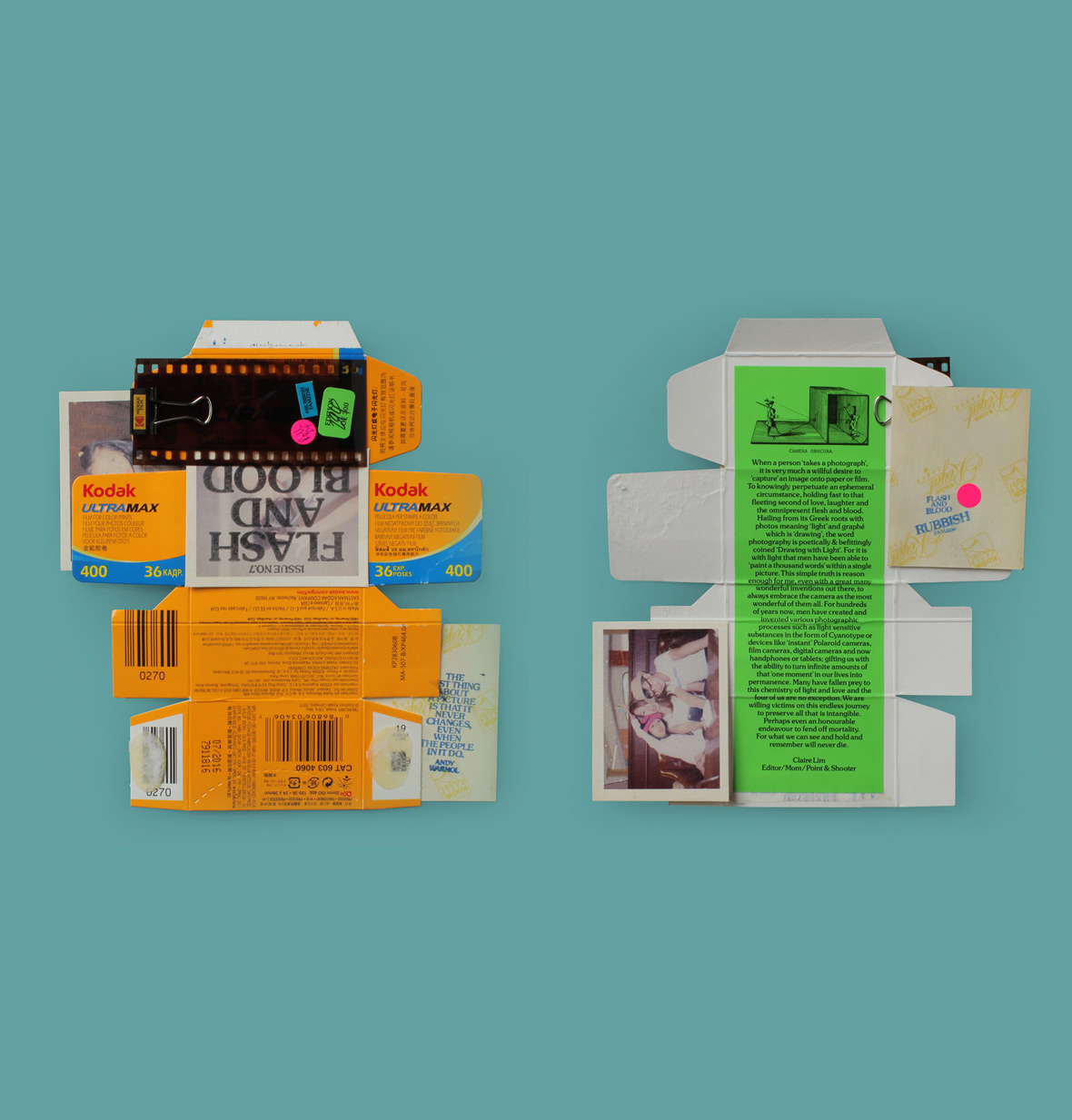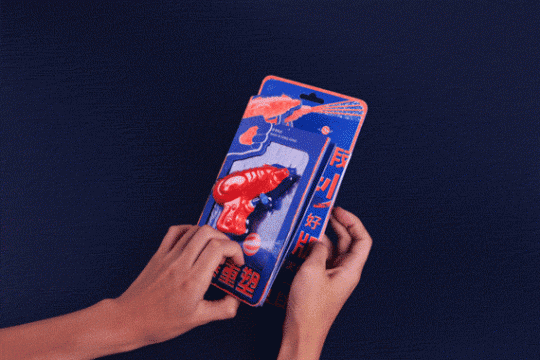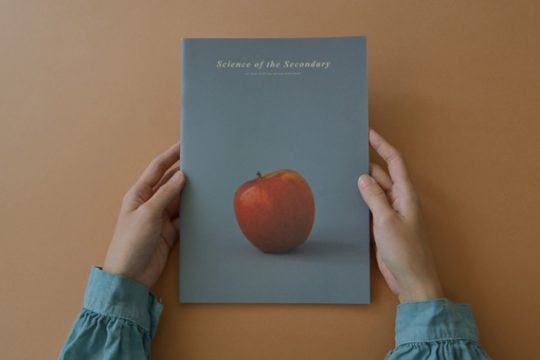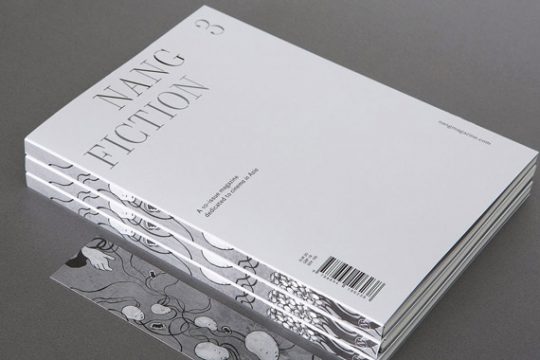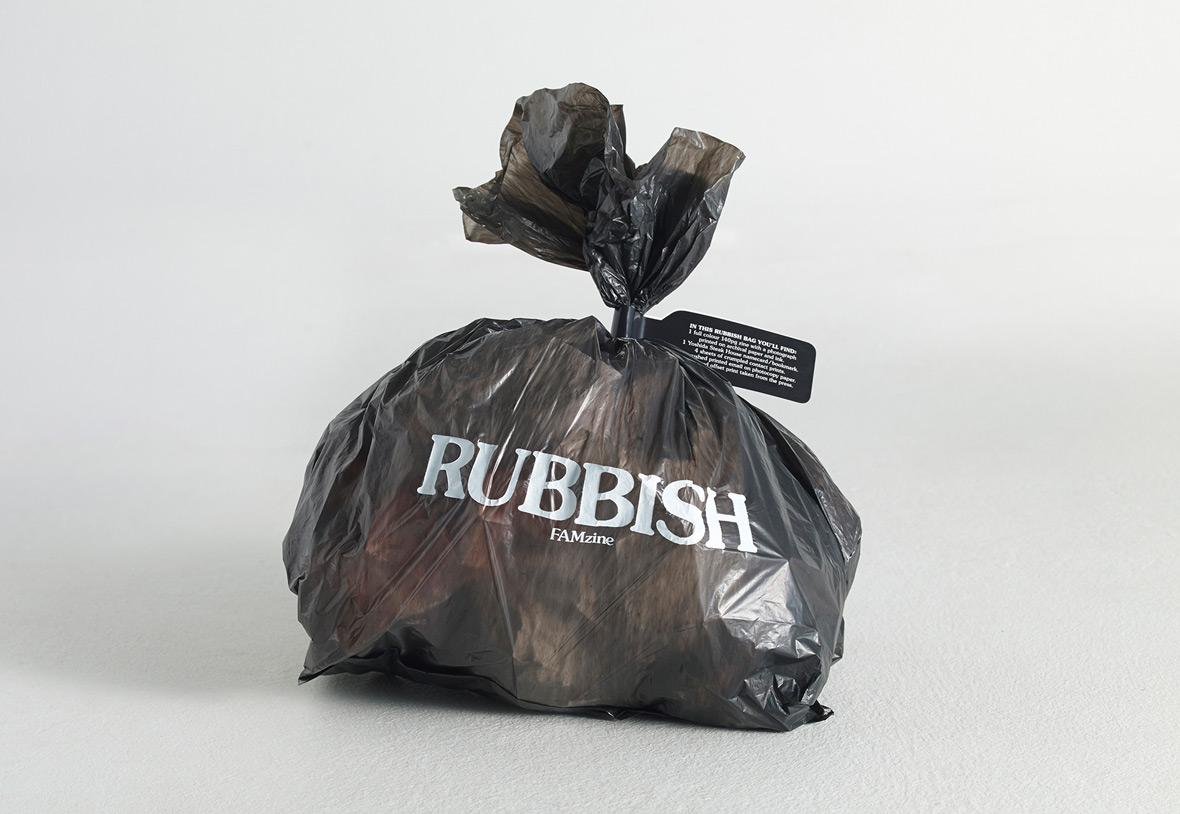
Open up the garbage bag and rummage through the discarded memories. Piece these crumpled scraps together and you just might discover that it forms the life of a family, with a husband, wife, son, and daughter. A tasty early-morning breakfast, a plate of sliced fruit, discolored family photo albums, the sounds of laughter and quarrels throughout the house – memories of all these sights, sounds, smells, and experiences come together in Rubbish Famzine, a zine made by the Lim family in Singapore.
Starting with its inaugural issue in 2011, Rubbish has been made by the same four-person editorial team: husband-and-wife duo Pann and Claire, along with their son and daughter, Renn and Aira. A seemingly ordinary family, the Lims are crafting family diaries in an extraordinary fashion.
拆开这袋垃圾,摊开那些揉皱的、蜷缩的、被丢弃的回忆,便能拼凑成一个鲜活的家庭印象:四口人,一对夫妻,一对子女,早起饭菜的香味,一盘被瓜分的水果,退了色的家庭相簿,聚集在客厅的争执和欢笑。看到的、听到的、嗅到的、触碰到的,都是它独特的“最”生命力。这就是《Rubbish Famzine》,一本来自新加坡四口之家所打造的家庭志。
从 2011 年第一期开始,《Rubbish Famzine》的团队就由这样四个人组成: Pann 和 Clairie 夫妻俩以及他们的孩子 Renn 和 Aira,这个看似再普通不过的四口之家,却实在地体现着家庭志的定义。
To Pann and Claire, their children aren’t just mischievous little rugrats who occasionally contribute to a discussion. The family’s creative philosophy is that everyone has to contribute their own ideas. Renn and Aira may be young, but their input is respected, and sometimes their imagination can yield surprising results.
Every issue is created in a casual atmosphere, with the entire family brainstorming over snacks, a pot of tea, and pen and paper. Then, through a series of candid conversations about their personal likes and dislikes, a new issue of this independent magazine born.
对于 Pann 和 Claire 而言,Renn 和 Aira 的存在并非只是偶尔参与讨论小捣蛋鬼们。因为这个团队的创意理念就是,每一个成员都必须有自己在想法上的贡献。虽然 Renn 和 Aira 年纪小,但是他们的每一个想法和意见都会被尊重,而且有时候孩子的想象力会惊讶这个世界。
《Rubbish Famzine》的每一期就是在这样的一种气氛下诞生的:一家四口,围坐在一起,一壶茶、一些小零食、笔和纸,彼此间毫无保留的畅谈,喜欢的讨厌的,简单直白的被交流被记录,最终一家人的只言片语变成了一本独立杂志。
The Ziney-est of Zines
Yet maybe “independent magazine” is the wrong word. As its name indicates, it’s really a zine, and this concept is the core of its creation.
There’s no set distinction between the two, and both zines and independent magazines are outside mainstream media, non-commercial, not for profit, and not bound by social convention. But while independent magazines are still magazines, with numbered issues, a regular publication, and retail distribution, zines tend to be small-scale publications that emphasize their handmade, artisanal quality and their creator’s lively spirit.
As a family-centric publication, the happenings of the family—however mundane or normal—are of course covered from issue to issue. But what makes each story so captivating is linked to the Lim family’s playful packaging and layout designs.
最 Zine 的独立杂志
与其把它定义为独立杂志(Independent Magazine),我更愿意称它为 Zine,可能正如它自己的名称 “Famzine” 一般,Zine 的概念成为了它的创作理念。
关于独立杂志和 Zine 的区别,其实也从来没有一个特定官方的说法。对于圈内的创作者们而已,两者共有的就是区别于主流传媒的文化产物,拥有非商业化的立足点、非盈利主导的运营模式以及摆脱世俗禁锢的创意性。独立杂志本身还是具备杂志的属性,期刊号、固定发行周期、分销概念等等。而 Zine 则更偏重于小规模印刷的独立出版物,强调手工感和一种鲜活的出版人精神(常常是独立制作)。
作为一个以家庭为中心的出版物,《Rubbish FAMzine》把家庭的琐事——无论多么平凡而日常——在一期又一期的杂志里被细细诠释。但当然了,每期的故事如此迷人的原因,也与 Pann 和 Clairie 一家俏皮包装和布局设计有关。
Issue #1: “Google Translating Tokyoto”
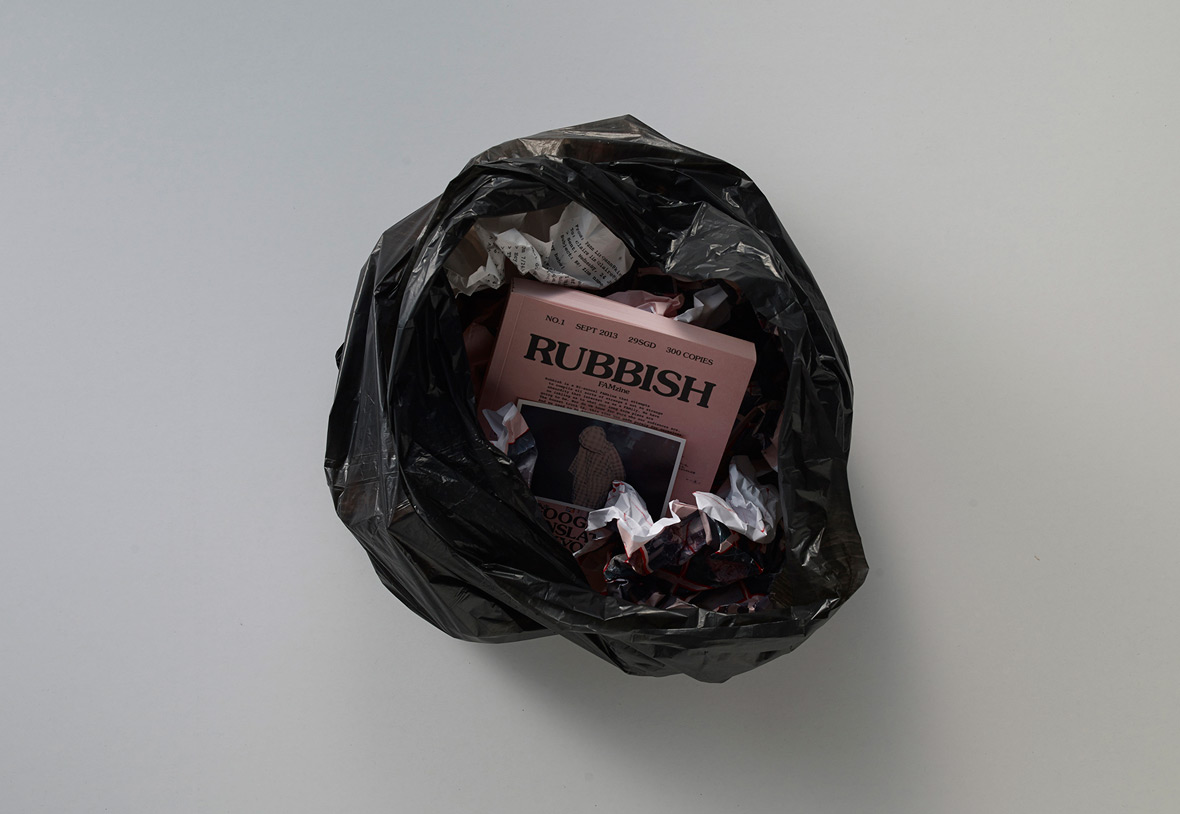
Staying true to the magazine’s title, product images for the debut issue were photographed with the magazine inside a generic black trash bag and surrounded by crumpled up paper scraps.
黑色垃圾袋包裹了杂志,里面塞满了揉皱的废纸,就仿佛一个任何家庭都会出现的装满垃圾的垃圾袋。
Issue #2: “Till Death Do Us Part”
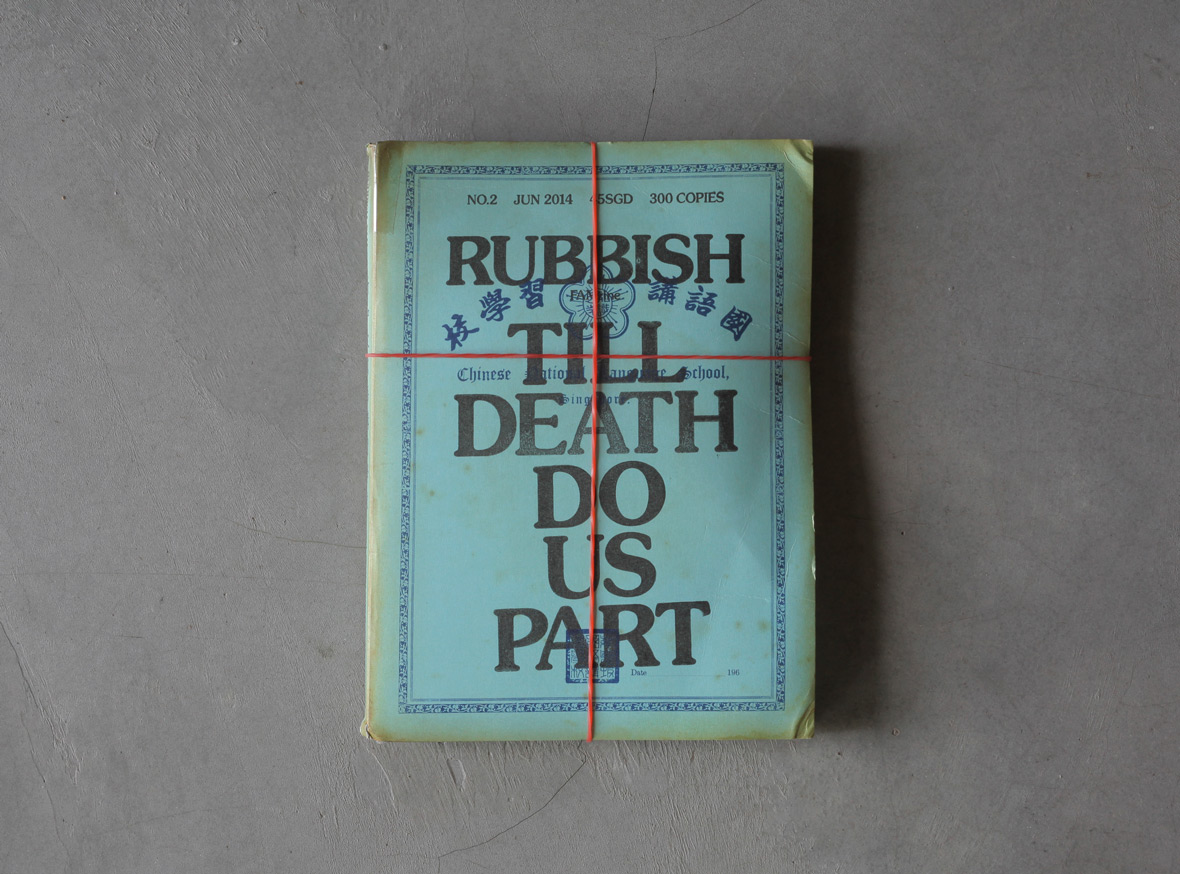
Adopting the aesthetic of old pamphlets and print material, this issue is comprised of five sub-issues of different sizes, all of which is thread bound. It’s all housed within a scaled-down replica of an old Chinese National Language School folder that inspired the issue.
做旧的小册子,按照不同的尺寸叠放,最后用红绳子扎起来,仿佛一个十字架,也正好照应了本期主题。
Issue No. 3: “Forever and a Day”
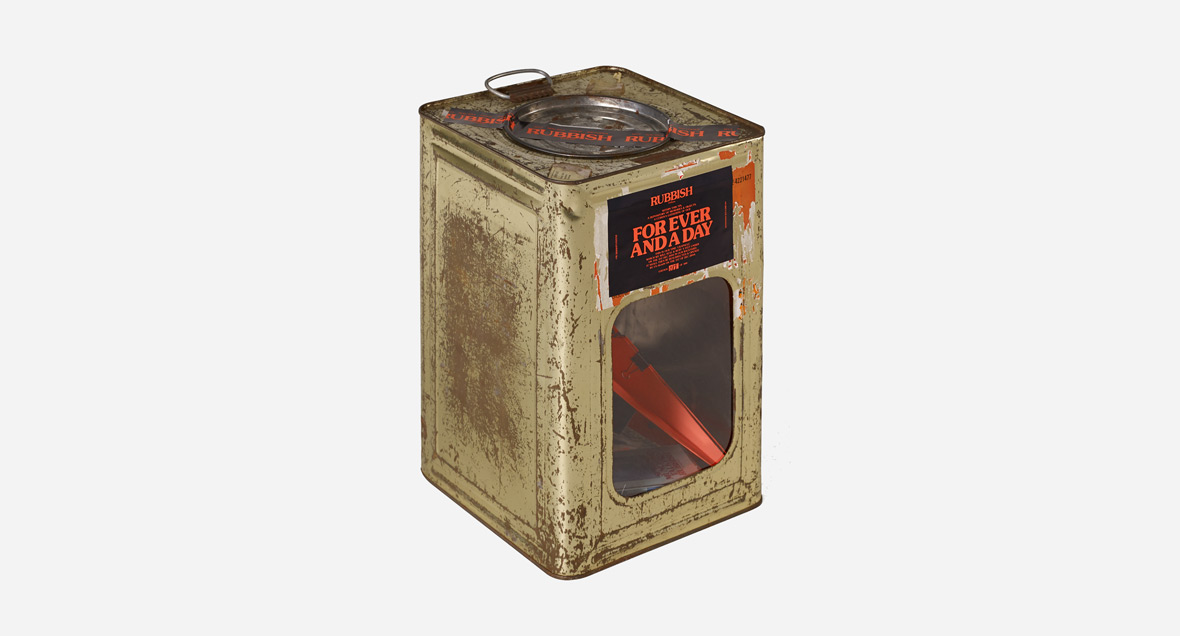
One of the most playful issues to date. Loose and seemingly random objects—which includes a paper airplane, a twig, cassette tapes, folded sheets of paper, and mini brochures—all packaged inside a tin cookie can make up the issue.
可玩性极高的,纸飞机、树枝、卡带、对折页、小册子,看似不相关的零部件却毫不冲突地放进了一个旧铁盒里。
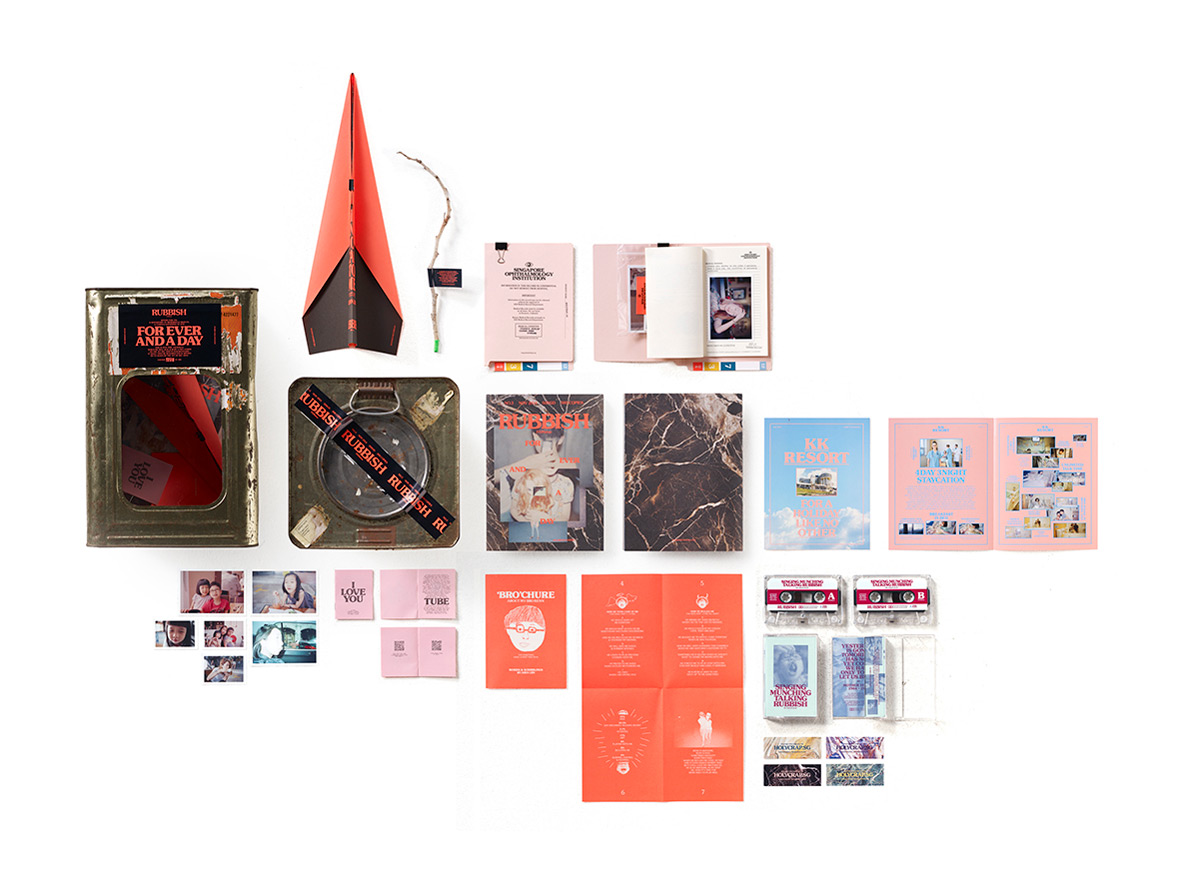
Issue #4: “The Incomplete Herbarium And Other Garden City Exploits”
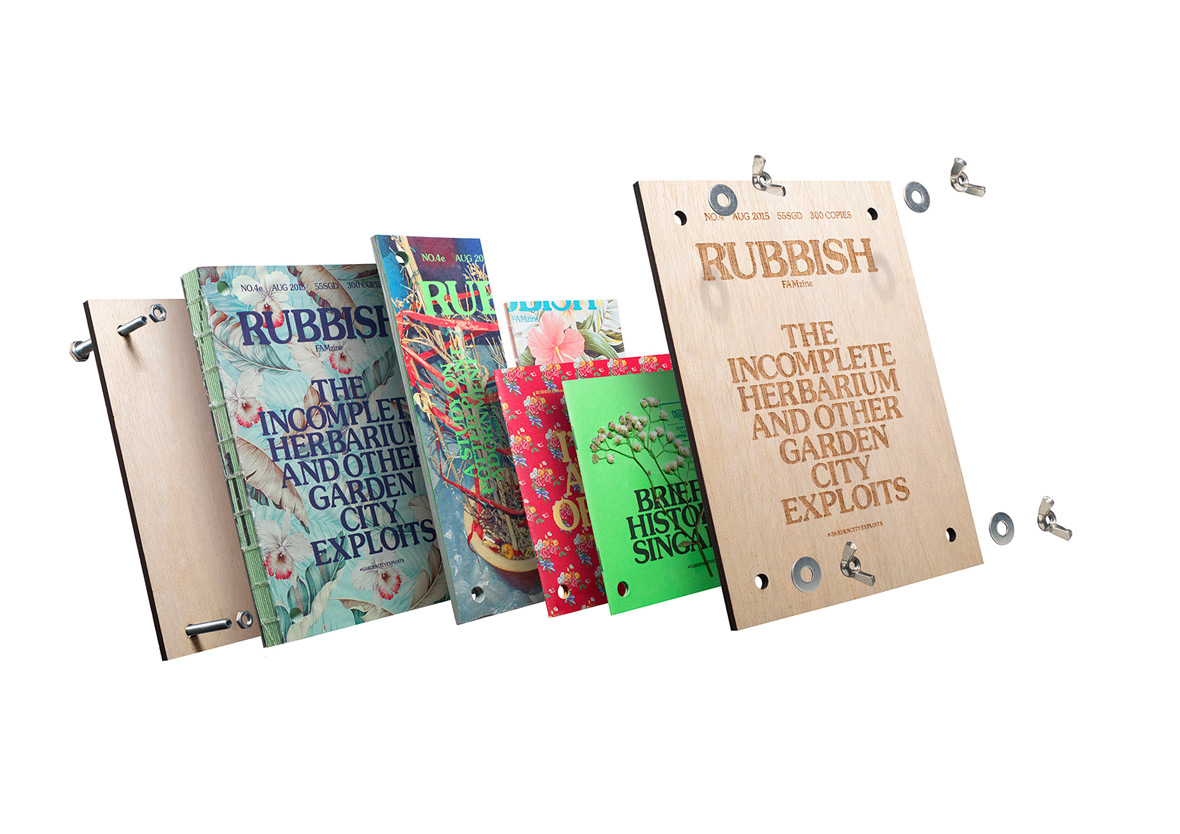
Two thin sheets of plywood make up the front and back cover of this issue, sandwiching the contents within. The use of wood is an allusion to the issue’s theme of urban gardens.
前后的薄木板设计,把小册子好像三明治一般夹在当中,木头的概念也接近了该期的主题:城市花园。
Issue #5: “In the Name of the Father”
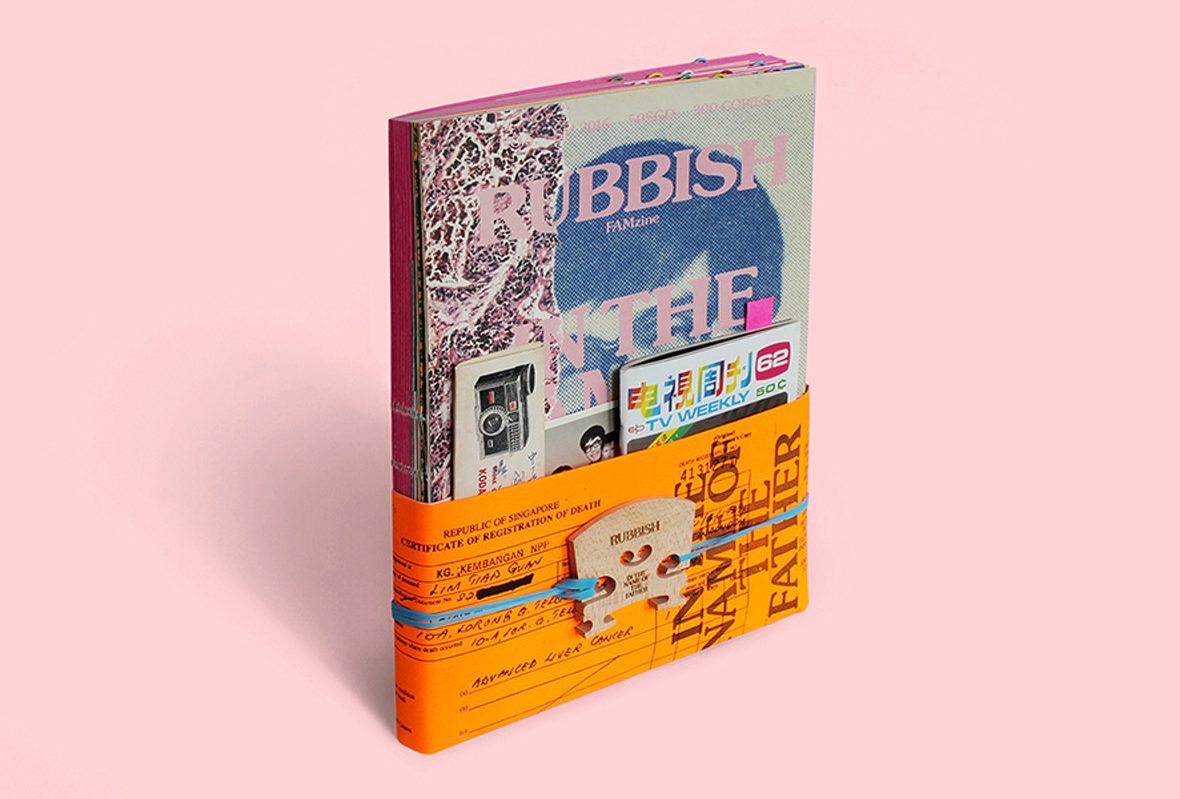
An issue of TV Weekly with Taiwanese singer Teresa Tang gracing the cover, a black-and-white family portrait, old publications filled with scribbles and notes, miscellaneous clippings held together with paper clips – this issue celebrates the life of Pann’s father, Lim Tiap Guan.
邓丽君封面的《电视周刊》、黑白的家庭照、做了标签的旧刊物、回形针整理的资料,每张纸都承载着父亲的生活气息。
Issue No. 6: “An Emojious Odyssey of the Gluttonous Omnivores”
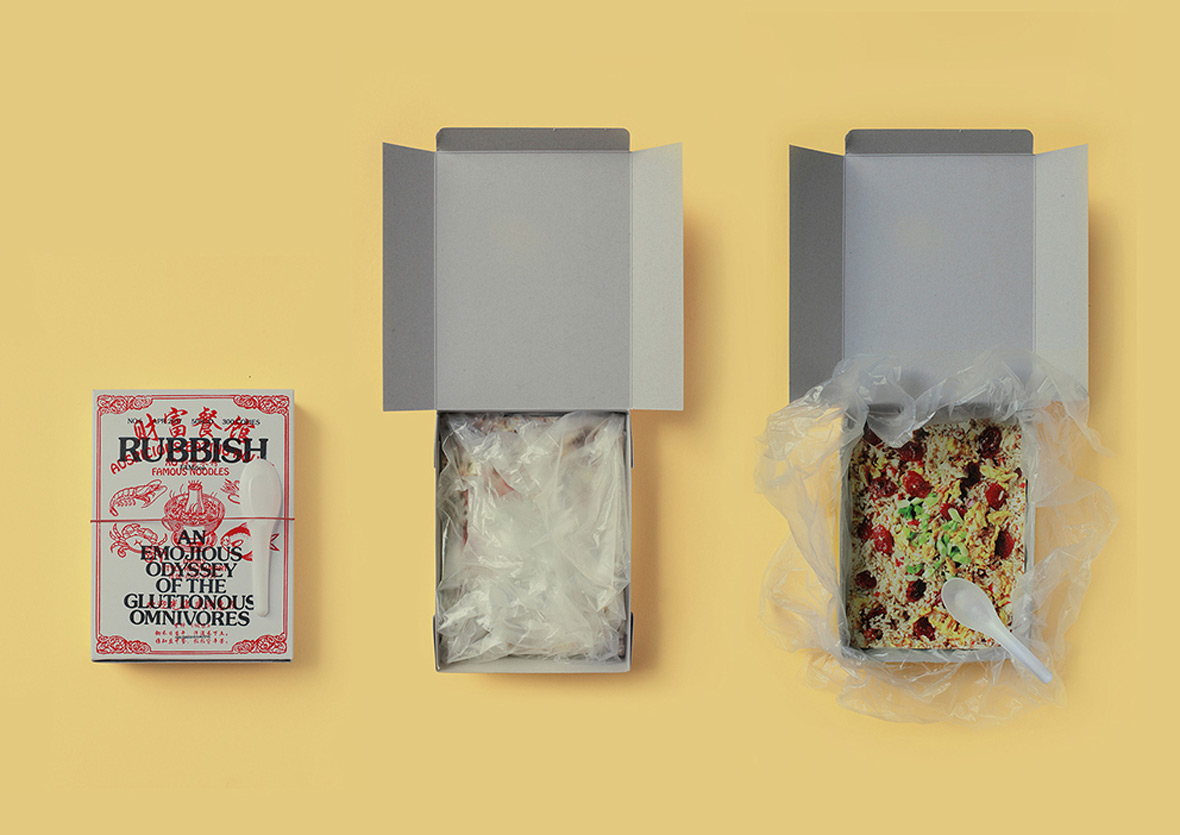
Designed like restaurant take-out, this issue makes gratuitous use of emojis as a means of expressing the family’s collective love for food. The layered binding makes for a fun journey into a world of all things delicious.
外卖盒的包装,塞满了 Emoji 表情,以此表达出这个家庭对食物的收集热。层层叠叠的装帧为读者展现了一个充满乐趣的美好世界。
Issue No. 7: “Flash and Blood”
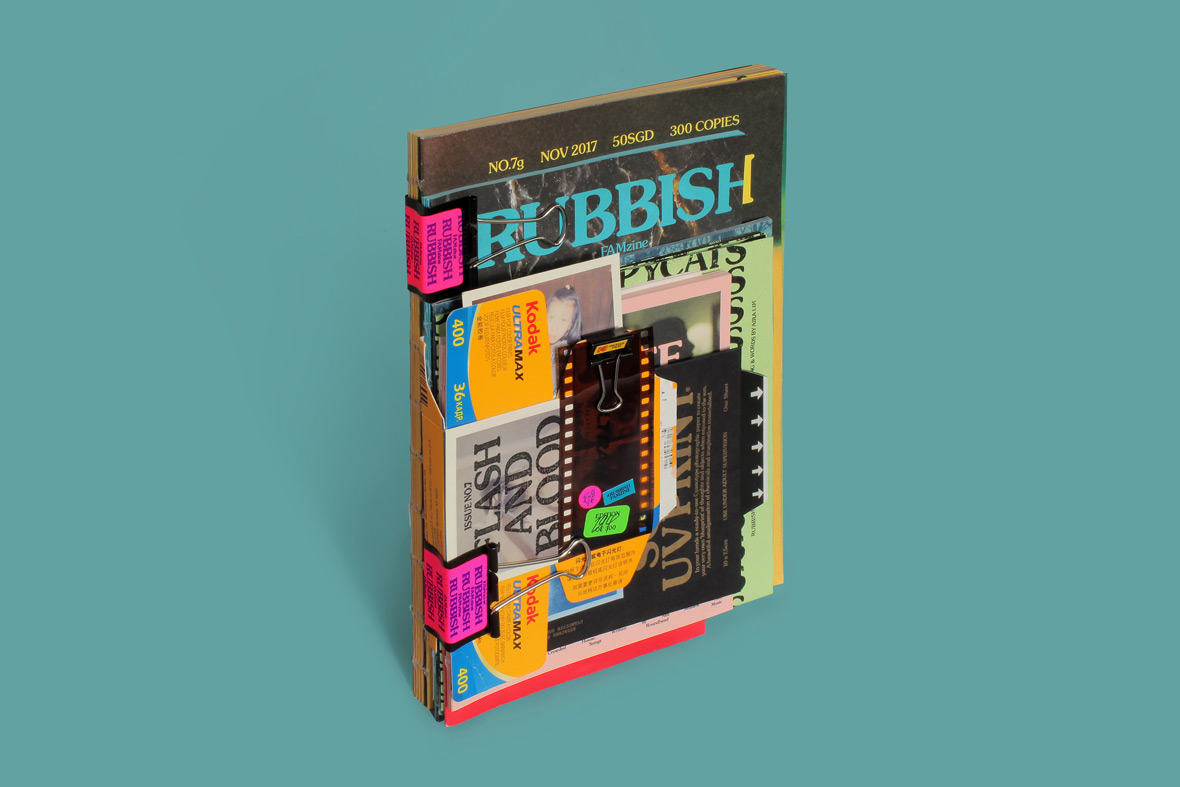
Featuring repurposed boxes of Kodak Ultramax 400, cyanotype paper, and an assortment of old family Polaroids, this issue is a loving ode to analog photography from the Lims.
主角是改装自柯达 Ultramax 400 的底片盒,配上蓝晒纸和旧的家庭拍立得,组成一集怀旧的书刊——这是他们一家人谱出的诗篇,用以歌颂自己对摄影的热爱。
Authentic, Intimate Content
Pann is often asked a pointed question: is the magazine an invasion of his family’s privacy? His answer is that Rubbish seeks to make appealing content, but it can’t help exposing some rather intimate stories.
He explains that before every issue hits the printers, the family reaches a consensus on the content. So no matter if it’s stories of Pann’s father’s illness or the private love letters of his parents, everyone’s already given their approval. Ultimately, Rubbish is a physical manifestation of the Lim family’s love: their love for each other, their love of travel, and their love of country. More importantly, they hope the zine can encourage, support, and help everyone who reads it.
最真实的无距离内容
曾经问过 Pann 一个很尖锐的问题:这会侵犯家庭隐私吗?他的回答是,《Rubbish Famzine》的确主张做亲和力很高的内容,但同时却或多或少都在向大众去揭露一家人比较隐私的情节或故事。首先,在独立杂志的内容被刊登之前,都会得到家庭成员的支持和认可。因此无论是父亲生病的故事还是他父母间的情书,其实大家都是表示支持的。《Rubbish Famzine》每一期的内容都在诉说这四口之家浓郁而真切的爱,对旅行的热爱,对自己国家的挚爱,对父母的珍爱。最重要的是,他们希望通过杂志的内容,能够激励、鼓舞并帮助到选择《Rubbish Famzine》的各位读者。
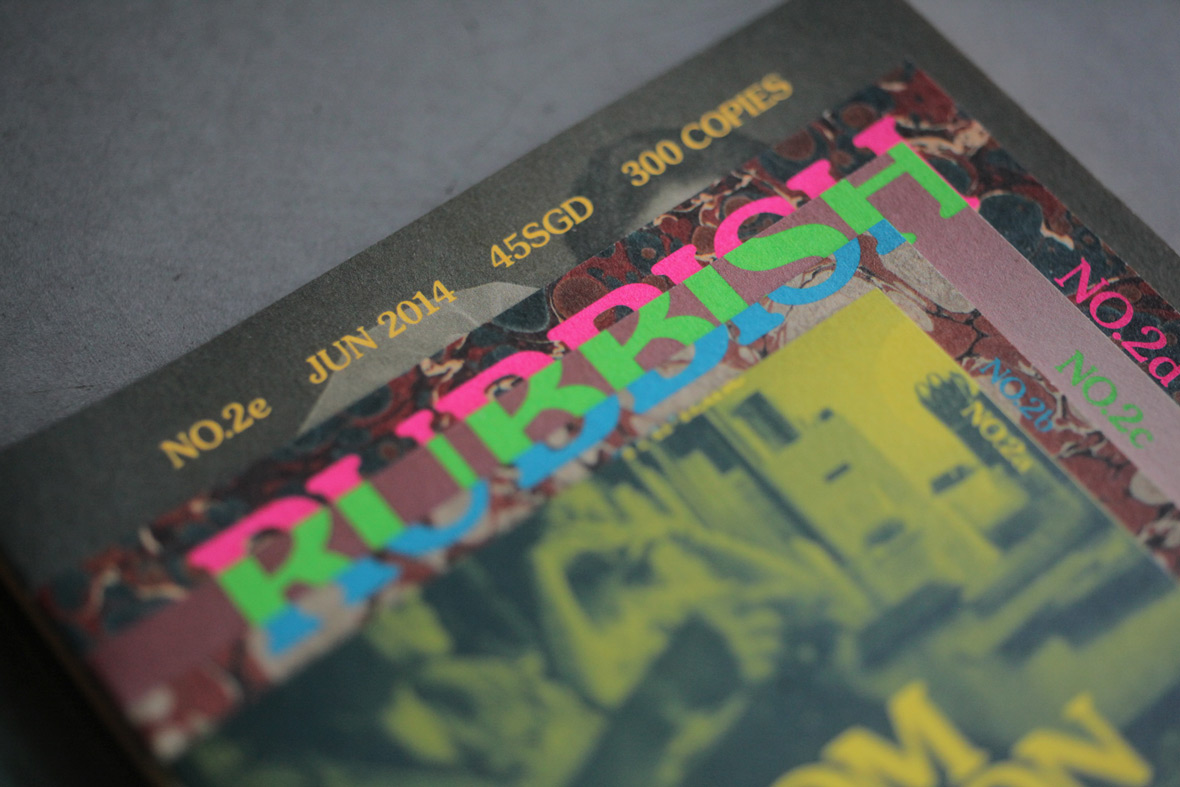
When asked about the name Rubbish Famzine, Pann laughs and says that “rubbish” is just something they often say at home instead of “stuff.” This playful means of communication perfectly encapsulates their quirky family dynamics.
“If you choose to pick up a copy of Rubbish and really read it, then for us there’s no greater honor or joy,” Pann says. “We hope every reader can be touched by our stories, laughing in delight or feeling moved to tears.”
As the Lim family’s saga continues, fans eagerly await every new issue. And no wonder—each story is authentic and meaningful, and perhaps by reading them, readers can discover meaning among the clutter of life.
至于杂志名“Rubbish”(垃圾),则来自于他们的口头禅,在 Pann 家,这个词常用以取代 “Stuff”(东西),这种独特的沟通方式,却很能展现了他们家其乐融融的气氛。
“如果你选择了我们的《Rubbish Famzine》并且认真阅读了它,就是我们最大的荣幸和快乐。希望每一个读者都能被我们的故事触动,无论是开心地大笑还是感到动容或悲伤。” Pann 一家的故事还在继续,总让我们禁不住去期待下一期的内容。因为故事里的每一个字都真实而有意义,可以透过它看到杂乱生活中的本质。
Additional Recommendations from Pann Lim:
I like fun, unique magazines with a fresh perspective. What comes to mind are LOST, Staple, Underscore, and Werk. If more print media in Asia can take similar creative approaches, I expect more people will be willing to read them.
主创人之一 Pann Lim 推荐的亚洲独立杂志:
我喜欢新鲜有趣独特的独立杂志,比如《LOST》, 《Staple》, 《Underscore》, 《WERK》. 如果亚洲纸媒能够继续秉持这样的创意态度,相信我们能看到更多的人愿意去阅读。
Facebook: ~/holycrap.sg
Instagram: @holycrap.sg
Contributor: Handowin Ho
Images Courtesy of Rubbish Famzine

